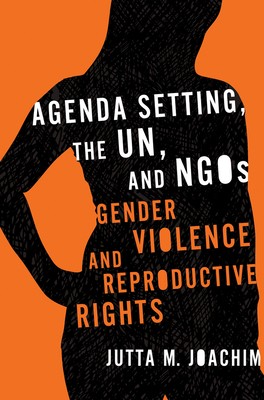
- We will send in 10–14 business days.
- Author: Jutta M Joachim
- Publisher: Georgetown University Press
- ISBN-10: 1589011759
- ISBN-13: 9781589011755
- Format: 14.5 x 21.8 x 1.7 cm, softcover
- Language: English
- SAVE -10% with code: EXTRA
Reviews
Description
In 1993 the UN General Assembly unanimously adopted the Declaration on the Elimination of All Forms of Violence against Women, condemning gender violence in both the private and public sphere as a violation of human rights. One year later the UN Conference on Population and Development approved a program that placed women's reproductive rights and health, rather than demographic targets, at the center of global population growth management. Each of these watershed events represented the culmination of a political process begun two decades earlier that was initiated and driven by the activities of international women's nongovernmental organizations (NGOs). While these developments may seem like political no-brainers, the evolution of this international consensus represents a remarkable shift in perceptions regarding women and their rights. Joachim tells the story of how this happened. She demonstrates how, prior to the 1990s, there was little consensus among states as to what constituted violence against women, and whether or how much control a woman should have over reproduction--what for some countries represented a violation of rights was for other countries a tradition or custom. Just how did the a consensus emerge? Joachim shows that women's organizations got savvy: they framed their issues in a strategic manner, seizing political opportunities in the international environment and taking advantage of mobilizing structures which they had at their disposal. Her framework builds a bridge between a rationalist approach, focusing on power and strategy and calculating actors, and a constructivist approach, emphasizing norms, ideas, and the interaction between agents and structures. Fittingly, Joachim's account is both academic and personal, blending theory and passions and personalities.
EXTRA 10 % discount with code: EXTRA
The promotion ends in 18d.18:07:39
The discount code is valid when purchasing from 10 €. Discounts do not stack.
- Author: Jutta M Joachim
- Publisher: Georgetown University Press
- ISBN-10: 1589011759
- ISBN-13: 9781589011755
- Format: 14.5 x 21.8 x 1.7 cm, softcover
- Language: English English
In 1993 the UN General Assembly unanimously adopted the Declaration on the Elimination of All Forms of Violence against Women, condemning gender violence in both the private and public sphere as a violation of human rights. One year later the UN Conference on Population and Development approved a program that placed women's reproductive rights and health, rather than demographic targets, at the center of global population growth management. Each of these watershed events represented the culmination of a political process begun two decades earlier that was initiated and driven by the activities of international women's nongovernmental organizations (NGOs). While these developments may seem like political no-brainers, the evolution of this international consensus represents a remarkable shift in perceptions regarding women and their rights. Joachim tells the story of how this happened. She demonstrates how, prior to the 1990s, there was little consensus among states as to what constituted violence against women, and whether or how much control a woman should have over reproduction--what for some countries represented a violation of rights was for other countries a tradition or custom. Just how did the a consensus emerge? Joachim shows that women's organizations got savvy: they framed their issues in a strategic manner, seizing political opportunities in the international environment and taking advantage of mobilizing structures which they had at their disposal. Her framework builds a bridge between a rationalist approach, focusing on power and strategy and calculating actors, and a constructivist approach, emphasizing norms, ideas, and the interaction between agents and structures. Fittingly, Joachim's account is both academic and personal, blending theory and passions and personalities.


Reviews